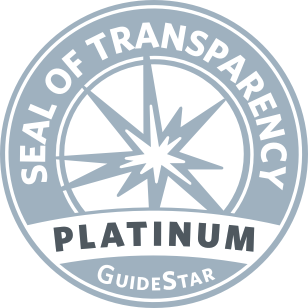Relaxation techniques are global treatments. Global treatments affect more than one symptom. Their goal in irritable bowel syndrome (IBS) treatment is to reduce overall symptoms.
You’ve been to a healthcare provider and you’ve had all of the tests. The diagnosis you’ve been given is irritable bowel syndrome or IBS… now what?
Your health care provider may have suggested that your IBS is “stress-related.” In no way does this mean that your symptoms are “all in your head.” Rather, your healthcare provider is referring to the ways in which the brain and digestive system communicate and interact with each other, commonly referred to as the “brain-gut connection.” In response to either a significant physical (e.g., bowel infection) or a psychological stressor (e.g., change of job, change in role in life), a disturbance in these complex interactions often can lead to the first onset of symptoms or aggravate symptoms you are already having.
Given that IBS is a disorder of brain-gut and mind-body interactions, many individuals find symptom relief and an improved sense of well-being when they incorporate simple relaxation techniques into their daily lives. Although stress is inevitable, if not managed well, it can become detrimental to one’s physical and emotional health. Thus, a regular practice of deep relaxation is associated with several health benefits including:
- a reduction of generalized anxiety,
- increased energy levels and productivity,
- improved concentration and memory,
- improved sleep,
- decreased fatigue,
- increased sense of self-confidence, and
- reduced muscle tension.
Whether you have five minutes or one hour to spare, regular use of the relaxation exercises discussed here will help you to feel more in control of your symptoms, while also promoting positive self-care. It is best to practice on a daily basis and, if possible, at the same time each day. Most people prefer to do the exercises either just upon awakening or prior to bedtime.
Here is a description of three widely used relaxation exercises:
- diaphragmatic/abdominal breathing,
- progressive muscle relaxation, and
- visualization/positive imagery.
Diaphragmatic/Abdominal Breathing
To locate your diaphragm, place your hand above your belly button, just below your ribcage. Practicing abdominal breathing involves allowing your breath to travel deep into your diaphragm.
- To begin, close your eyes (if you desire) and become aware of your breathing. Notice the way the air feels as it travels in through your nostrils and then out. Next, take a long, slow deep breath inward, bringing the breath all the way down into your abdomen (to know if you are doing this correctly, you should feel your hand rising as you inhale.)
- When you’ve taken your breath inward, pause briefly and then exhale slowly through your nose or mouth, depending on your preference.
- Continue this exercise taking 5–10 slow, deep inhalations and exhalations. It is important to keep your breathing slow and rhythmic. To help you slow down, practice counting to four on the inhalation and exhalation, pausing in between. The process will be as follows:
- Inhale to the count of four 1…2…3…4. Pause. Exhale to the count of four 1…2…3…4.
- Some people enjoy saying a word or mantra to themselves on the inhalations and exhalations. For example, Inhale R-E-L-A-X…Pause. Exhale R-E-L-A-X.
There is no single right way, so choose whatever feels most comfortable for you.
Continue this process 5–10 times. If you begin to feel faint or light-headed, stop the breathing for 15–20 seconds and then begin again.
Progressive Muscle Relaxation
This method of relaxation focuses on the tensing and then relaxing of the various muscle groups. When used in combination with abdominal breathing, this method of relaxation can have profound effects on one’s level of tension and anxiety by promoting a state of deep relaxation.
This exercise may take approximately 20–25 minutes to complete. Although this may feel like a significant time commitment, keep in mind the positive results you will experience when you give yourself permission to take this personal time. Allow yourself to put aside your worries during this time, realizing you can always return to them later.
- To begin, find a comfortable space where you can sit or lie down and where you are free from distractions. Take 3–4 deep abdominal breaths, inhaling and exhaling slowly and rhythmically as discussed above. You may wish to close your eyes for this exercise.
- Begin by tensing the muscles in your forehead, making a frown. Hold this for 3–4 seconds and release the tension. Notice the difference in sensation between the tensing and relaxing of these muscles.
- Next, squeeze your eyelids together for the same count. Hold and release the tension, letting your eyelids become heavy and relaxed.
- Wrinkle your nose for several seconds. Hold and relax.
- Move to your jaw. Tense, hold and relax these muscles.
- Allow all of the muscles in your face to relax. Imagine the tension draining away. Take a nice, deep breath in and then out.
- Next, move to the muscles in your neck. Slowly roll your head from one side to the other. Reverse directions and do this again. Imagine your neck muscles feeling loose and relaxed.
- Shrug your shoulders, bringing them up tightly toward your ears. Hold for a count of three and then relax them.
- Move to your upper and lower arms and fists, tightening and then releasing the tension. Allow your arms and hands to hang limply by your side. Feel the tension draining from your shoulders through your arms and hands.
- Take another slow, deep breath inward and tighten your abdominal muscles. Hold this for three counts and then slowly exhale, focusing on the warmth and positive sensation you are feeling.
- Next, focus on tensing your upper legs. Hold and then release the tension. Slowly move to your lower legs and calf muscles. Again, hold and release. Now move to your feet and ankles. Point your toes toward you, hold and then release. Circle your ankles in both directions, releasing any tension you may be feeling in this area.
- Now take 2–3 slow, deep breaths. Scan your body to see if there are any areas where you are still feeling tension. If there are, direct your attention to these areas, tensing and relaxing them as you have just done. Imagine the tension being completely drained, leaving you feeling a sense of warmth and heaviness.
Enjoy this feeling of relaxation for several minutes. Allow yourself 3–4 deep abdominal breaths before resuming your breathing to its normal pace. When you are ready, open your eyes, stretch, and reorient yourself to your surroundings.
You may want to tape the above exercise on an audiocassette to help guide you through it. As stated above, it is best to practice the exercise on a daily basis to gain its full benefits. As you become more familiar with the exercise, you may find you are able to complete it in 20 minutes or less.
Visualization/Positive Imagery
This form of relaxation involves using your mind to imagine yourself in a calm, peaceful, and relaxing place. By focusing on such a place, your attention is diverted away from worrisome thoughts.
- Begin by closing your eyes and imagining a peaceful, relaxing scene or place. You may imagine a sandy beach, a quiet meadow, a lush countryside, or other place.
- Take a few deep breaths and as you do so, imagine yourself in this very place. Take a look around. What do you see? What do you feel? Imagine the rich colors. Imagine the warmth of the sun or the breeze of the wind. Notice any sounds that are present. Imagine yourself enjoying the beauty of what surrounds you. Make full use of your senses as you visualize yourself in this scene, feeling a sense of peace and calmness with your troubles out of sight.
- In addition to imagining a peaceful scene, you may also wish to visualize yourself feeling free from the pain and discomfort of your IBS symptoms.
- Identify where your discomfort is predominant.
- Take several long, slow, deep breaths and go to that area.
- Imagine releasing the tension and discomfort there, feeling yourself relaxed and in control.
- You may also wish to simply imagine your body as you would like it to feel…calm, relaxed, and without pain.
Stay with this scene (or scenes) for as long as you need to and know that you can return to it at any time when feeling tense, anxious, or stressed. As mentioned, you may also wish to imagine this scene when you are feeling any pain or discomfort.
This form of relaxation, while powerful, also takes practice, as our minds can become easily distracted by other thoughts. Realize this is normal and natural. Do not become upset with yourself. Instead, without judgment, gently bring yourself back to focusing on your peaceful scene and your breathing.
Summary
By taking the time to educate yourself about IBS, identifying possible triggers of your symptoms, and practicing the relaxation exercises discussed here, you will be taking positive and active steps to help better cope with and manage your symptoms. Furthermore, you will be giving your body and mind the personal time and attention it deserves to more productively deal with any stress or anxiety that may come your way. Be sure to have patience with yourself as learning these skills takes time.
Lastly, don’t be afraid to ask for help. Dealing with IBS can be extremely frustrating and overwhelming. Seeking professional help does not in any way imply weakness. On the contrary, recognizing the need for help is both a sign of strength and your determination to live a productive and meaningful life – you certainly deserve it!
Adapted from IFFGD Publication #191 “Coping with IBS from the Inside Out” by Debbie Zeichner, LCSW, BCD, Los Angeles, CA.









